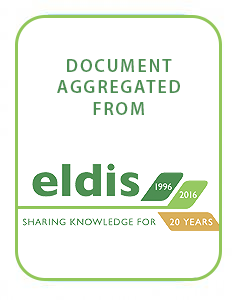Resource information
Khulna, the third largest metropolitan city (46 km) of Bangladesh, is vulnerable to climate change and unplanned urbanization process. The city has been identified as one of the 15 most climate change vulnerable cities of the world. This study was conducted to assess how urban and peri-urban residents of Khulna have been affected by the Mayur River through its use and abuse, and to explore adaptation measures. To complete the study, primary data was collected through field surveys, stakeholders' consultation, focused group discussion, key informantinterview and water quality analysis. Result shows that the Mayur plays a very important role by meeting the agricultural water demand; domestic water demand and water demand for capture and culture of fisheries for livelihoods. However, urban residents use the river as a dumping site for discharging solid waste. River encroachment through various means and practices is also a regular event. Analysis of salinity and tidal water level indicates that salinity intrusion would further increase due to sea level rise induced by climate change. Water and wastewater quality reveals that the river water is extremely polluted to support aquatic life and livelihood services.Physico-chemical parameters, DO, EC, TDS, Na+, Mg2+, PO43- and salinity exceed the recommended limits for drinking and irrigation set by the DoE and WHO. These overall situations often initiate water use conflicts. Finally, we discussed the current water management practices and adaptation for long term management of the Mayur.


